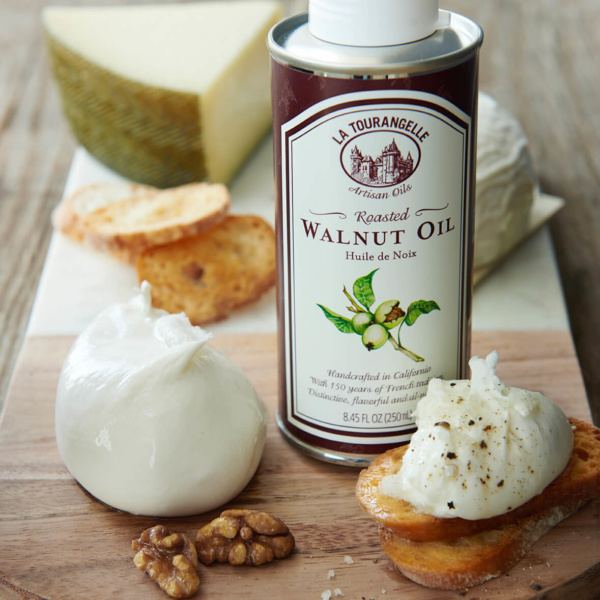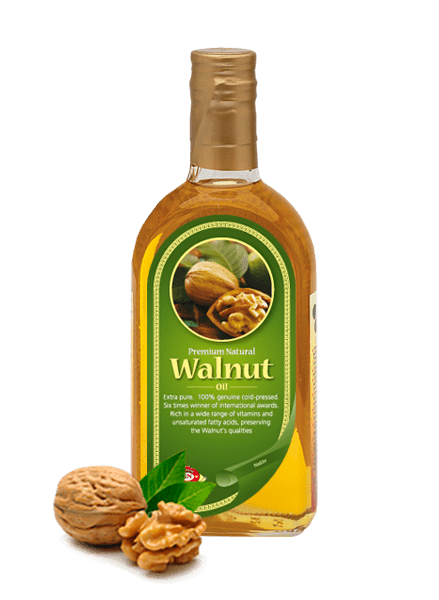 | ||
Similar Colza oil, Grape seed oil, Walnut, Peanut oil, Avocado oil | ||
Walnut oil its health benefits
Walnut oil is oil extracted from walnuts Juglans regia (Persian walnuts). Each 100 g of oil provides about 63.3 g polyunsaturated fatty acids, 22.8 g monounsaturated fats, and 9.1 g saturated fats. It contains no cholesterol.
Contents
- Walnut oil its health benefits
- The benefits of walnut oil magical oil
- Culinary use
- Artistic use
- References
Unlike most nuts that are high in monounsaturated fatty acids, walnut oil is composed largely of polyunsaturated fatty acids (72% of total fats), particularly alpha-linolenic acid (14%) and linoleic acid (58%), although it does contain oleic acid as 13% of total fats.

The benefits of walnut oil magical oil
Culinary use

Walnut oil is edible and is generally used less than other oils in food preparation, often due to high pricing. It is light-coloured and delicate in flavour and scent, with a nutty quality. Although chefs sometimes use walnut oil for pan frying, most avoid walnut oil for high temperature cooking; heating tends to reduce the oil's flavour & nutritive value and to produce a slight bitterness. In addition cooking rapidly destroys the oil's antioxidants. Walnut oil is at its most valuable in cold dishes such as salad dressings, where it lends its flavour to best advantage.
Over 99% of walnut oil sold in the USA is produced in California. There are also producers in China, Iran, Mexico, France, Romania, Moldova, Ukraine, Turkey, Australia, New Zealand.

There are two types of walnut oil commercially available: cold pressed and refined. Cold pressed walnut oil is typically more expensive due to the loss of a higher percentage of the oil. Refined walnut oil is expeller pressed and saturated with solvent to extract the highest percentage of oil available in the nut meat. The solvents are subsequently eliminated by heating the mixture to around 400 °F (200 °C). Both methods produce food grade culinary oils.
Walnut oil, like all nut, seed and vegetable oils will undergo rancidification accelerated by heat, light, and oxygen.
Artistic use

Walnut oil was one of the most important oils used by Renaissance painters. Its short drying time and lack of yellow tint make it a good oil paint base thinner and brush cleaner.
Some woodworkers favour walnut oil as a finish for implements that will come in contact with food, such as cutting boards and wooden bowls because of its safety. People who mix oil & wax to formulate wood finishes value walnut oil as an ingredient because of the edibility of both ingredients. The oil typically is combined with beeswax in a mixture of 1/3 oil to 2/3 beeswax.
